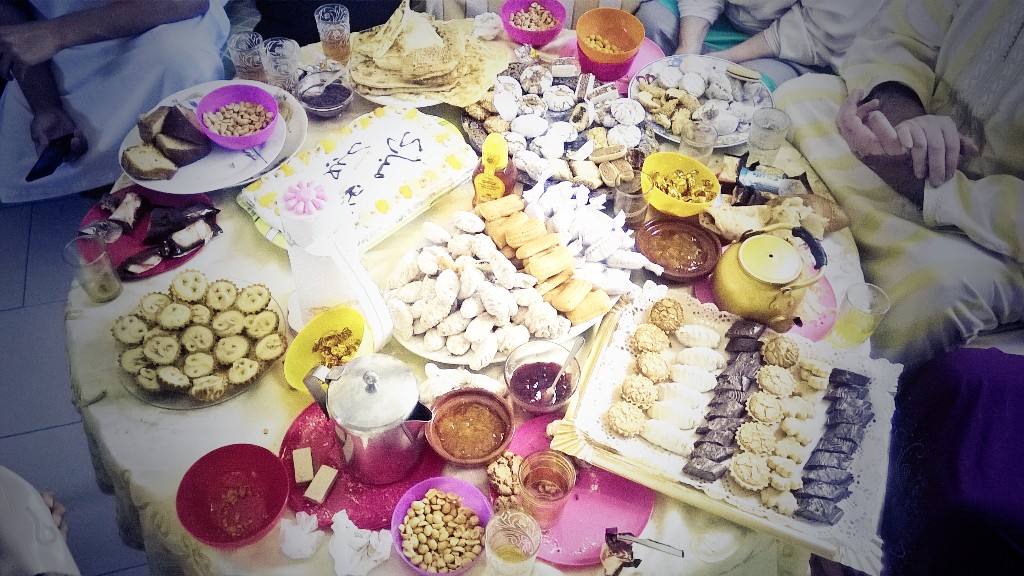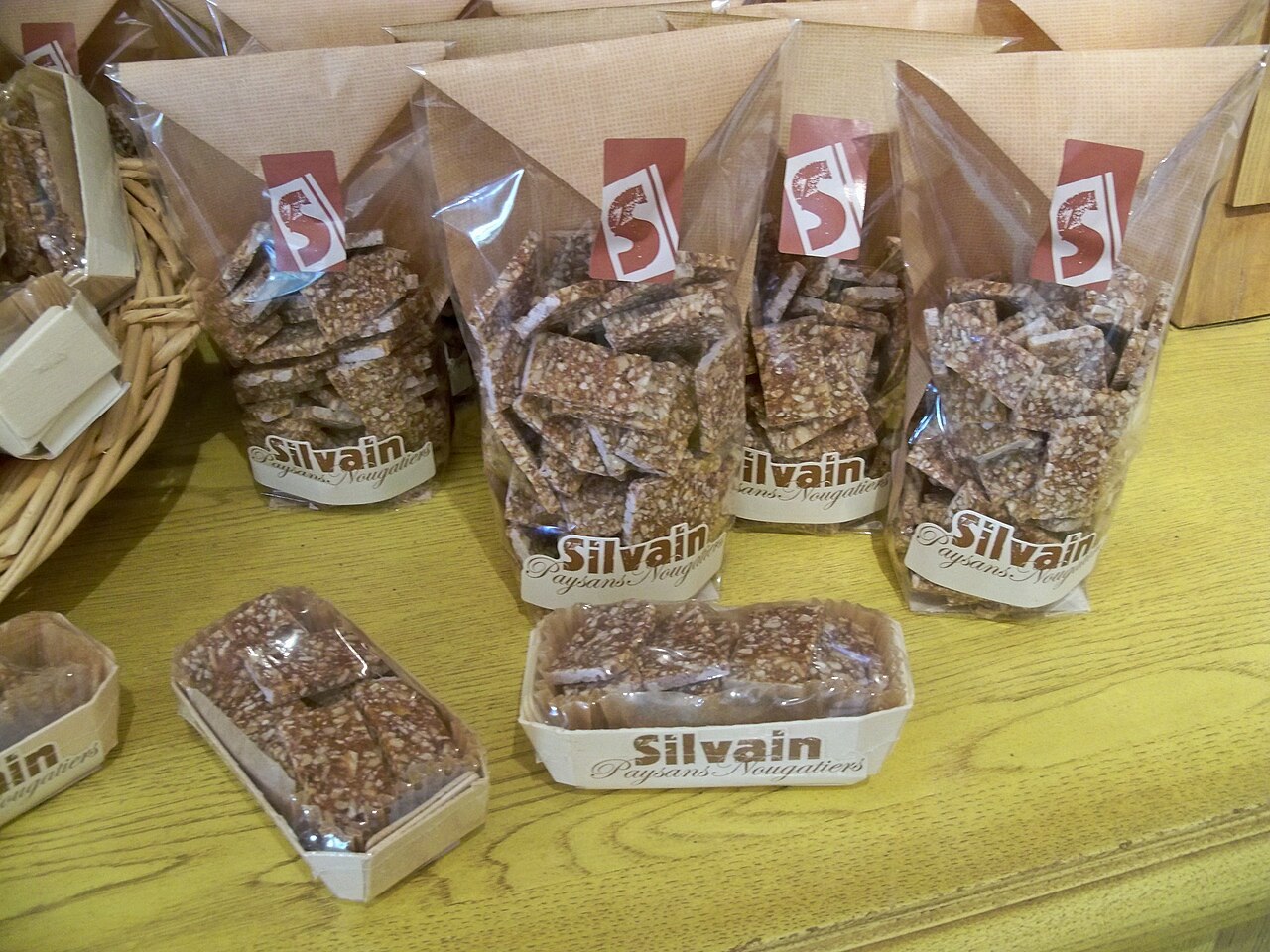Some reformed Christians in France are too indifferent to celebrate Christmas, given the lack of a biblical obligation to do so. There is nothing wrong with this, as clarified by Romans 14:5. Me personally, I think Christmas has been a great thing, given its success in supplanting the pagan feast of Mithras: - it has been so successful that few people even know what that was about today. In any case, as reformed Christians, there are very few special days in the calendar.
Bilal has no Christmas traditions of his own, as he is a Muslim convert. Upon his conversion to Christianity, he refused to celebrate Eid-al-Adha and Eid-al-Fitr (two Islamic festivals), which naturally caused friction, but I think his family is thankfully now resigned to the fact that he is not going to regress to Islam.
Traditionally, Provence has Le Gros Souper ("Lou Gros Soupa" in the local dialect), eaten before Midnight Mass (an Anglo-Catholic Tradition that we don't practice). Le Réveillon is traditionally started after midnight on the night of the 24th/25th of December following Midnight Mass. Whilst we don't have Midnight Mass, Le Gros Souper and Réveillon mirror the traditional timings with us. Historically Church of Rome nations tend to finish their celebrations after that, with historically protestant nations (particularly Anglo-Saxon ones) having more on the 25th. As a result, we tend to have a Christmas Day service instead of a Midnight Mass, so we plan our overnight stays so as not to be too tired for church the next morning (Christmas Day was on a Sunday this year). This year's Réveillon and Déjeuner de Noël (Christmas Lunch) were relatively short, given the church activities on the Sunday.
Santa Claus is known as Père Noël ("Père" = "Father" and "Noël" = "Christmas") in France and children leave shoes, rather than stockings, for him. As far as I know, nobody in our church bothers with this: - we tell our children early on what we want them to believe and what we don't, as there is enough confusion in our atheistic societies about what we should believe. We want them to believe in God the Father, Son and Holy Spirit, so we tell our children about them, but we tell our children as early as possible that Santa Claus/Père Noël is based on Nicholas of Myra (Turkey), who was a bishop (in the incorrect Church of Rome/so-called Orthodox understanding of the word) many centuries ago and not alive today.
I said I would write about culinary tradition and haven't said much so far, so I will start.
Christmas meals in France tend to observe standard customs for apéritifs and digestifs, the former supposedly being to stimulate the appetite (admittedly not always desirable for a dainty Frenchwoman such as myself) and the latter to aid digestion. As far as I know, there is no scientific basis for either, but that misses the point: - we French have a very sophisticated consumption of alcoholic beverages. Obviously, champagne featured heavily: - though I long for the day when Provence produces alcoholic beverages as world-renowned as those of the historical Champagne region, like any Frenchwoman, I just adore champagne. I just remembered that I am overdue a visit to Reims: - I am tired of hearing silly Anglo-Saxon people pronouncing it "raymz" (it is pronounced "ranz").
Canapés (known as amuse-bouches if they are free in an eating establishment) feature very heavily in French parties, particularly at Christmas, though I must admit, to a dainty Frenchwoman such as myself, they often make up a full meal! Bilal has been into strongman training for many years and therefore tends to have a meal before a party, so that he is content to just have canapés until the meal is served, but I admit, France hasn't always been progressive regarding gluten-free cookery, so he often goes without: - poor Bilal! I try to push people to accommodate him though, so as to expand his repertoire beyond jollof rice, MDR. Canapés generally consist of bread, pastry or a cracker. They tend to be salty or spicy, so as to get people to buy more drinks, but in most societies, it is the custom for savoury food to be served before sweet food anyway. Vol-au-vents (above) are a very common canapé: - there are so many different fillings that go well with them, such as cream cheese, paté, fish paste etc.
Foie gras is a common French Christmas tradition, but it is not an acceptable food for us as Bible believers. Granted, there are at least 10 passages in the New Testament saying all foods are acceptable to eat, but the cruelty inflicted on the ducks and geese (force-feeding so their livers become 10 times their normal size) is not something I can stomach (pun intended): - Proverbs 12:10 says that a good man is kind even to his animals. However, we are more than happy to have paté where we have reasonable confidence in the welfare of the animals (a real Frenchwoman always looks into the provenance of her food, even if she might have a "bof" attitude towards animal welfare). Given the coastal location of Provence, we often like fish-based patés, but they can be made with so many different fish, meat, vegetables etc.
Mireille Guiliano is absolutely correct when she talks about a Frenchwoman's preference for oysters (another Christmas food). Given that only a small part of the physical area taken up is actually meat, they are a great way for a dainty Frenchwoman to eat less than she thinks and maintain her dainty figure. There are various ways to season oysters, but even when eaten without seasoning, their taste is absolutely divine. I expect to be making a few more visits to cities such as Brest to enjoy the oysters when the LGV Bretagne opens later this year: - I am hoping the timetable will be set up to allow good connections via stations such as Marne la Vallée-Chessy to avoid needing to cross Paris between Gare de Lyon and Gare Montparnasse stations.
Like the Anglo-Saxon world, turkey is very common at Christmas, though the chestnut stuffing is the main difference. Silly British people tend to use bread-based stuffing, which is not feasible with Bilal (unless made with gluten-free bread).
Christmas logs (Bûches de Noël) are common (more so than the Anglo-Saxon world): - thankfully, most people have forgotten the pagan Yule festival that this tradition ultimately comes from, though maybe I would have reservations if it stirred up an interest in pagan culture again. Silly British people tend to have a chocolate cream covering, but in France, people are much more sophisticated than that. French Christmas logs have much richer flavours, including orange zest and cherry confit, plus their colours are much brighter.
Putting Provence's fantastic regional dishes to one side for one moment, various other French regions have unique Christmas dishes. All of these dishes mentioned in the article I love, admittedly not as much as those from Provence. They are: -
- Capon (castrated rooster from Lauragais, between Toulouse and Carcassonne)
- White sausages (from Rethel in Champagne-Ardenne)
- Venison (deer meat from Sarthe, southwest of Paris)
- Sea bass (southwestern France)
- Stuffed goose (Alsace)
- Lobster (Brittany)
I admit I haven't been to Toulouse very often, since it is not particularly easily accessible by train, particularly from Marseille. However, I have managed to try capon. Silly Anglo-Saxon people mock us when we claim we know from the taste if the rooster was castrated early in life: - I can confirm that we can tell, MDR.
Bilal came with me on a visit to Reims a while ago and was wary of the white sausages, as he was in the UK visiting his homies in Stratford and tried local sausages (silly British people stuff sausages with bread) and fell ill. However, I checked and double-checked on his behalf that they were gluten-free, so we had them and he really liked them.
Venison is reasonably common in the UK, but the French method of preparation is far superior to the English one. Interestingly, it was the Normans who introduced the term, MDR! Sea bass and lobster are not unique to France either, but the preparation is far superior to anywhere else: - in France, a chef's trade is treated as a skilled craft, unlike pretty much anywhere else.
Stuffed goose (which uses apples, chestnuts and citrus fruits) is an acquired taste as far as silly Anglo-Saxon people are concerned. In the run-up to Christmas, some English clients visited the Paris office of my magazine. They were what are known in Britain as remoaners (a portmanteau of "remain" and "moan"), people who can't accept that the democratic will of the British people regarding Brexit, and therefore wanted to visit the European parliament whilst they were there. They liked to act like they were cultured and aware, but didn't realise that this is in Strasbourg, not Paris! Duh! We therefore stepped on a train and were in Strasbourg 1h48m later (around 540km away). They asked to try a local dish, so I found a restaurant serving stuffed goose. They hated it because of all the sweet flavours: - silly Anglo-Saxon people struggle to understand sweet main courses. For dessert, we had Alsatian Kouglof, which they didn't like either, as they were expecting something super-sweet, which turned out to be only a mildly-sweet brioche, MDR!
The desserts mentioned in the article are: -
- Berawacka (Christmas fruit cake from Kayersberg, Alsace)
- Calissons (I will cover this later)
- Guinettes (sour cherries soaked in brandy and with a chocolate coating from Aquitane)
- Mendiants (I will cover this later)
Christmas cake and pudding in the UK have some similarities with Berawacka, though they are nowhere near as sophisticated (my British visitors liked these). Guinettes are always great for a Frenchwoman looking to make a meal with an air of sophistication for very little effort (soak the cherries, then melt the chocolate in a bain-marie before dipping the cherries inside).
Onto Provençal Christmas dishes.
As mentioned, we have Les Treize Desserts, which often feature calissons, a sweet made of ground almonds and candied fruit, topped with icing. Aix-en-Provence is famous for producing these: - you can get there via the local TGV station, but if arriving from the Paris direction, it is easier to go to Marseille and catch a TER (34 minutes) to the town centre station, particularly as some trains don't stop at Aix-en-Provence TGV.
I am not so fond of the superstition that traditionally existed with Les Treize Desserts (representing Christ and the 12 apostles), e.g. breaking the fougasse bread (1/13), rather than cutting it, so as to avoid being indebted. Some people regard such an act of memory as being an act of religious devotion, but we regard such superstition as being badly unbiblical.
Nougat was traditionally eaten at Christmas, though less exclusively now. Provence is famous for this, though a town famous for the production thereof (Montélimar) is just outside Provence. Nougat is the soft variety (with eggs) and nougatine is the hard variety (without). There are also white and black varieties: - hazelnuts, pine nuts or pistachios with white nougat and almonds and honey with the black. Bilal loves nougat, as he likes sweet foods, but his coeliac disease limit his options (nougat being one).
Mendiants traditionally accounted for 4/13 of the desserts, the colours representing the gowns worn by the 4 separate monastic orders: dry figs (Franciscans), almonds (Carmelites), raisins (Dominicans) and hazelnuts (Augustinians). There is a chocolate variant where one of each is put on top of a chocolate disc. If I make them, I deliberately do numbers other than four, given our distaste for the Church of Rome.
Dates (representing Christ's eastern origins) are common and often stuffed with almond paste. Another option for Bilal: - almond flour is a good substitute for wheat flour in cakes. Quince paste and other fresh fruits are common, depending on local availability.
We had a very traditional Provençal Christmas, save for the exceptions mentioned. Bilal is slowly warming up to this, given his family's traditional calendar. Bilal wanted to celebrate Christmas more, but his parents made this difficult. Now he is living with me, he is not subject to the same familial pressures. He invited family members to join us: - naturally, they refused, just as we did with their Eid celebrations. They find it difficult to accept that Bilal's new life with me and our son living away from their family home means it is harder to apply familial pressure. In spite of all this, we had an absolutely fantastic first Christmas with our son and I look forward to many more traditional Provençal Christmases with Bilal and our children by our sides.
.jpg/1024px-thumbnail.jpg)





_086.jpg/120px-Canap%C3%A9s_(Navidad)_086.jpg)
















No comments:
Post a Comment
Hello and welcome to my blog Impossibly Dainty French Woman where I tell everyone how wonderful we Frenchwomen are and how to be impossibly perfect and thin like us. Feel free to comment here or e-mail me on mariannegaboriault@gmail.com .